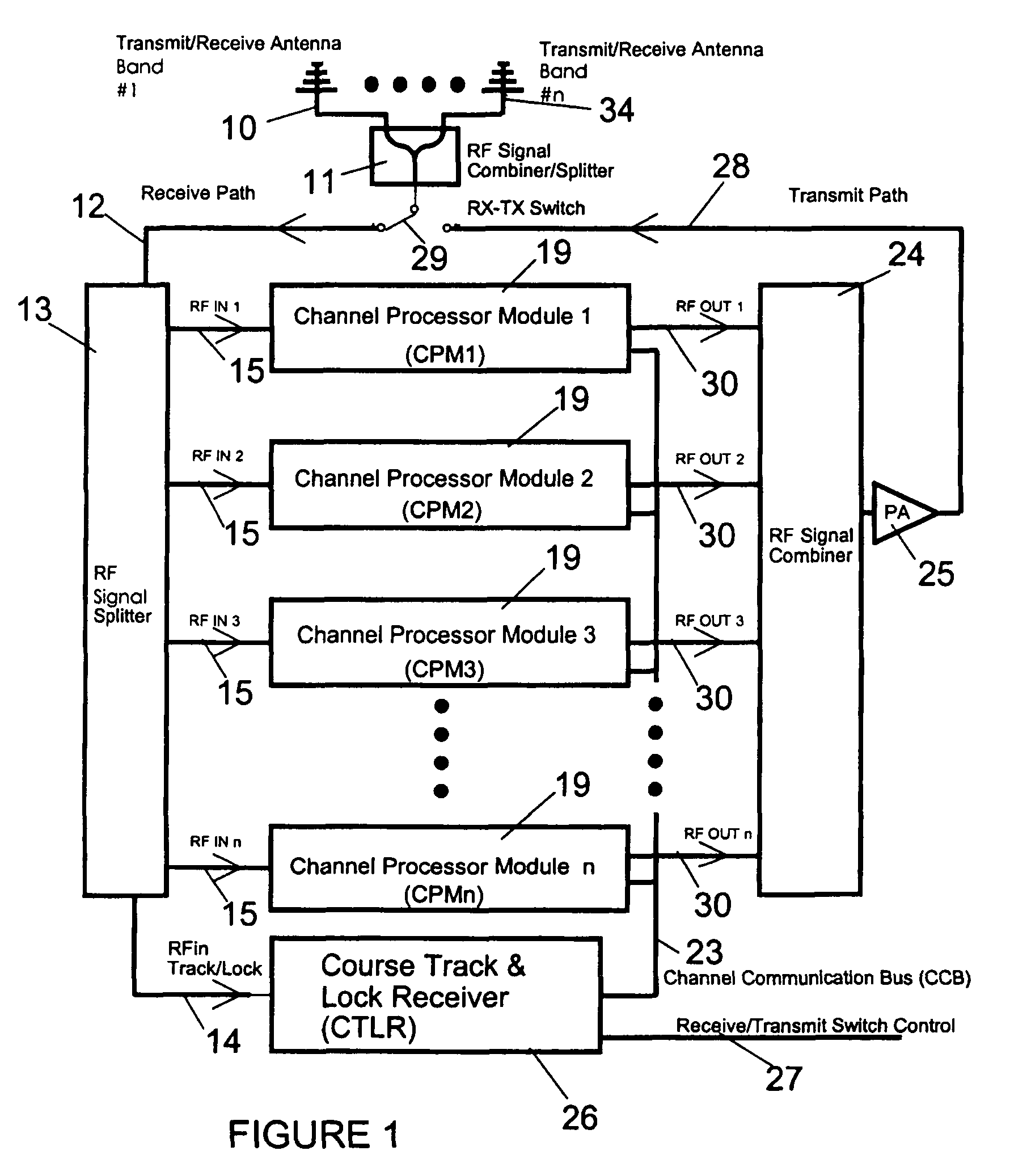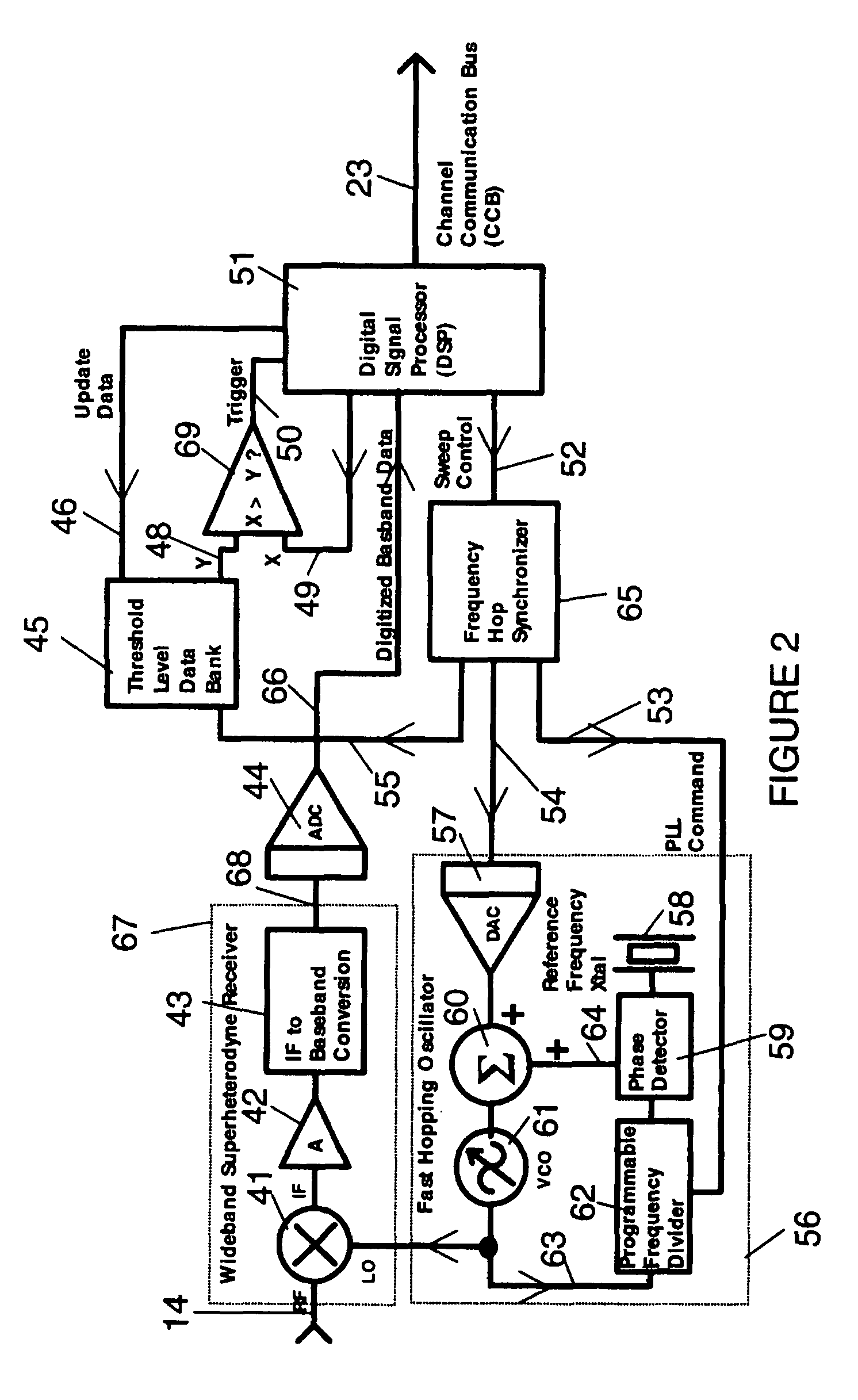Reactive parallel processing jamming system
a parallel processing and jamming technology, applied in communication jamming, instruments, measurement devices, etc., can solve the problems of less time spent, premature device actuation, and large distortion, and achieve the effect of convenient expansion, convenient evaluation and response, and great speed
- Summary
- Abstract
- Description
- Claims
- Application Information
AI Technical Summary
Benefits of technology
Problems solved by technology
Method used
Image
Examples
Embodiment Construction
[0025]The system is a parallel processing jamming architecture which is designed to attack first and then concurrently investigate multiple signals simultaneously in the radio environment. The system facilitates responding and evaluating many suspect radio targets simultaneously with much faster speed than in prior art. The system is organized such that the front-line or initial response is detected by a very fast-scanning primary receiver / processor, here forth called the Course Track and Lock Receiver (CTLR 26), which uses a composite threshold to determine whether the signal in its received bandwidth is unusual. Upon this decision the CTLR 26 delegates the attack and investigative response to any one of many channel processors, here forth called Channel Processor Modules (CPMs 19). All CPMs 19 may have the same receive and transmit bandwidth as the CTLR 26 and are quickly tuned under the direction of the CTLR 26 to the suspected target frequency. Once a CPM 19 is assigned, and due...
PUM
 Login to View More
Login to View More Abstract
Description
Claims
Application Information
 Login to View More
Login to View More - R&D
- Intellectual Property
- Life Sciences
- Materials
- Tech Scout
- Unparalleled Data Quality
- Higher Quality Content
- 60% Fewer Hallucinations
Browse by: Latest US Patents, China's latest patents, Technical Efficacy Thesaurus, Application Domain, Technology Topic, Popular Technical Reports.
© 2025 PatSnap. All rights reserved.Legal|Privacy policy|Modern Slavery Act Transparency Statement|Sitemap|About US| Contact US: help@patsnap.com



